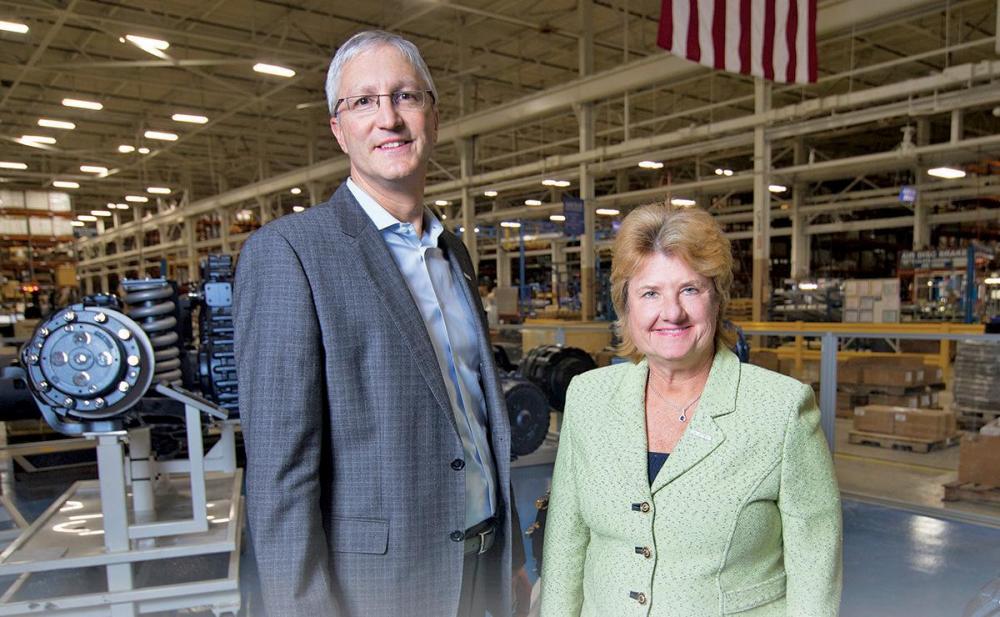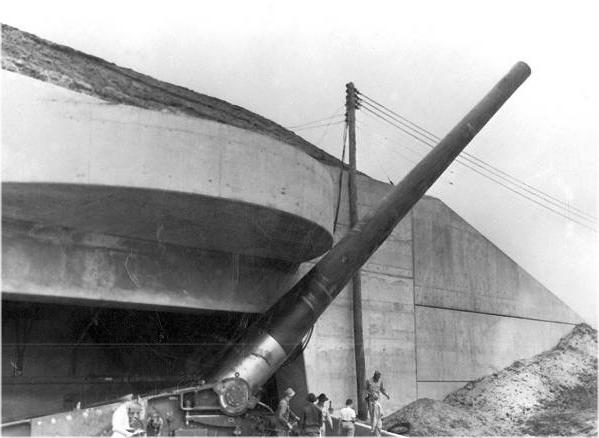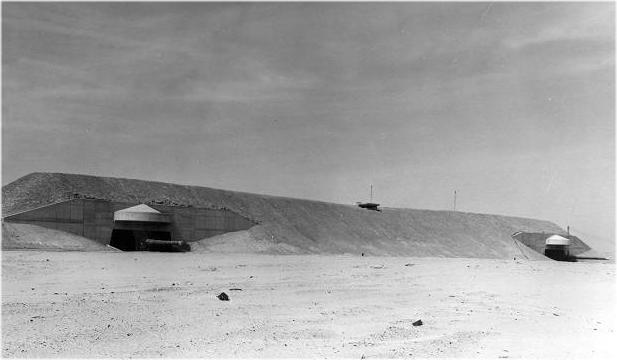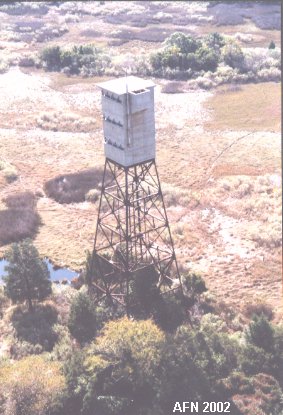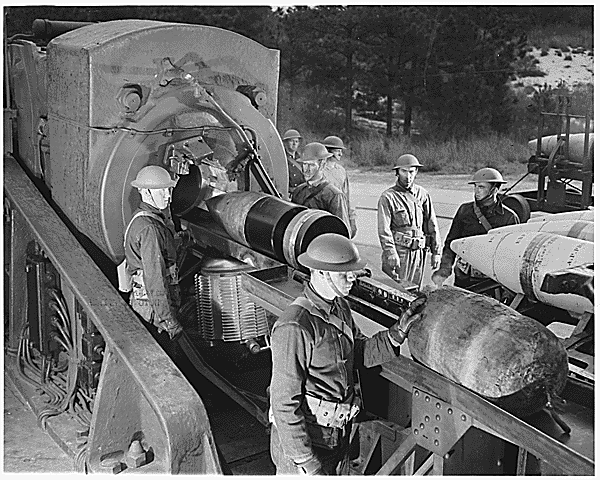
kscarbel2
Moderator-
Posts
18,920 -
Joined
-
Days Won
114
Content Type
Profiles
Forums
Gallery
Events
Blogs
BMT Wiki
Collections
Store
Everything posted by kscarbel2
-
Wrightspeed partners with AxleTech on heavy-duty electric drive
kscarbel2 replied to kscarbel2's topic in Trucking News
Another reinvention for AxleTech Lindsay Chappell, Automotive News / February 19, 2018 Turnaround chief steers company into electricfication niche Three years ago, Mary Petrovich got a call from an executive at defense contractor General Dynamics asking if she would take over the struggling Detroit-area commercial vehicle supplier AxleTech International. Petrovich knew all about AxleTech because she had run the company and reinvented it. Twice. Petrovich had led the fast- growing company's sale to General Dynamics seven years earlier, in 2008. But in 2015, AxleTech was in trouble. "There was some hesitation," admits Petrovich, a Harvard MBA who once ran Dura Automotive's billion-dollar global driver control business. "Only because I wanted to make sure I had it in me to do this a third time." Her idea of turning a company around? "Seven days a week, 80 hours a week until you succeed," she says. "But I felt like it was my baby and I was responsible for it," she says. "I knew that, no matter how ugly it looked to other people, there were still possibilities to make it great. It took us three years to dig them out, but we've done it and we're ready to go. Again." Petrovich was on Automotive News' list of 100 Leading Women in the North America Auto Industry in 2000 when she was at Dura. Today, Petrovich, 55, is leading a team to take AxleTech into a new transportation role. AxleTech, a supplier of low-volume axles, brakes and aftermarket parts for heavy-duty commercial and defense vehicles, is positioning itself to supply electric drivetrains for vehicles other than cars. It is a vision — shared by an increasing number in the auto industry — that just as electrification is taking hold of passenger vehicles, it is also a viable strategy for commercial vehicles. That means electrified delivery trucks, Class 8 trucks, garbage trucks, utility vehicles, military vehicles, buses, construction vehicles, airport shuttles — anything that moves on wheels, other than cars. But even cars cause a twinkle in the eye of the hard-charging Detroit executive. "Since this business started 100 years ago, the focus has been on heavy trucks and off-road," she told Automotive News. "But to be honest, the work we're doing now in electric vehicles, in areas like motors — they touch both the truck world and the car world. Some of the innovations we're providing on the heavy truck side have not been implemented on the car side. "So I wouldn't see it as a stretch that little AxleTech could have technology that could creep over into passenger cars." "Little AxleTech," as she calls it — with 2017 sales of about $250 million — has been something of a Detroit stray cat for the past two decades. And apparently only Petrovich knows how to make it purr. AxleTech is the original industrial operation once known as Rockwell International. AxleTech still operates the century-old factory in Oshkosh, Wis., built by the industrialist Col. Willard Rockwell in 1919. But since the early 2000s, the company has had trouble being "owned." In 2002, Rockwell's descendant company, Meritor Automotive, determined that AxleTech didn't fit with its core operations and put it on the market. The unit was acquired by a private equity firm, and Mary Petrovich was recruited as its first CEO. "When we took over this business in 2002, most people thought it was going to die pretty quickly," she says. "It had everything going against it. We were very aggressive in getting out of that." Enter Carlyle But that ownership arrangement was short-lived, and in 2005 AxleTech was sold again to the Carlyle Group, a Washington asset-management firm with $178 billion in assets. Under Carlyle, Petrovich repositioned AxleTech again — this time to enter the robust market for military vehicles, supplying drivetrains to Mine Resistant Ambush Protected vehicles used in the wars in Iraq and Afghanistan. Under Carlyle, business surged, rising from about $200 million in 2005 to $500 million in 2008. Petrovich also stoked AxleTech's aftermarket business for the first time. In five years, Aftermarket Vice President Bill Gryzenia grew sales from $10 million a year to $200 million annually by 2010. In 2008, with the military market humming loudly, Carlyle sold AxleTech again — this time to General Dynamics. Petrovich and Gryzenia left in 2010 for other pursuits. But sales peaked in 2011 at about $560 million. In 2015, with defense contracts dwindling and General Dynamics no longer keen on operating a small niche business such as AxleTech, the call went out to Petrovich to take the company back off of its hands. Carlyle and Petrovich agreed. She would serve Carlyle as AxleTech's executive chairman and take an ownership stake. She rehired Gryzenia — who had become Dana Corp.'s vice president of aftermarket — to return as AxleTech's CEO. "We got another opportunity to use a clean sheet of paper," Gryzenia says. "We asked, 'How can we redefine this company? How can we put it back on a rapid growth path again?' "And three years in, we're doing it — through electric commercial vehicles." The auto industry's focus has been on electric passenger vehicles, he points out, while electrifying commercial trucks is an obvious play. Electrification offers truck owners and fleet operators a faster payback on investments, since fuel costs are a central part of commercial vehicle purchase equations. But AxleTech's management is far from alone in its enthusiasm for the idea. Tesla plans to develop an electric semitruck and startup contender Nikola proposes the same idea. Diesel engine maker Cummins late last month acquired the British battery systems business of Johnson Matthey to develop new battery materials to enter the commercial heavy-duty EV segment. Last week, Dana CEO James Kamsickas told analysts on the company's earnings call that Dana sees potential for an electrified commercial vehicle market. The company is marketing an e-axle to the electric bus segment. But Kamsickas said the technology reaches beyond buses. "There's not one end market that we're not in some form of conversation, product development, launch, you name it," he told the analysts. "That could be mining, construction, forklifts, glass material handling — every single one of them." Engineers Petrovich believes AxleTech has a head start because her team has been preparing for the market since returning to the helm three years ago. AxleTech has expanded its global manufacturing footprint, opening a plant in India and in China, and has increased its engineering head count by about 70 percent. Space in the U.S. company once used to produce component forgings is now used for engineering offices. According to Gryzenia, the company has filed for more patents in the past 12 months than in the previous 10 years. AxleTech's engineers have co-developed a drivetrain for an electric bus with zero-emission bus maker Proterra that is scheduled to go into production in the third or fourth quarter. Petrovich expects to double company revenue within 24 months. "That's the story — to be there on the commercial vehicle side of electrification," she says. "We're working with major programs across utility space — garbage trucks, military vehicles. In the next 2 to 15 years, everything is going electric." -
Dahlgren.....off 301 on the river? Always wondered what took place there.
-
rw vent window felt
kscarbel2 replied to ou812jk's topic in Exterior, Cab, Accessories and Detailing
Call Watts, have them look at the 84QS51R RH assy breakdown, and order the 2795 vendor code post felt. -
Peterbilt Sales Soar, Truck Maker Eyes Growth
kscarbel2 replied to kscarbel2's topic in Trucking News
Ingersoll-Rand air starters were a Mack factory option in the states for decades. I actually miss their popularity. https://www.ingersollrandproducts.com/en-ap/power-tools/products/air-starters/air-starters.html -
We've come a long ways............. .
-
U.S. Army M1888 8-inch railway coast defense guns being test fired at Fort Story in Virginia Beach, Virginia. Date: July 8, 1935 https://en.wikipedia.org/wiki/8-inch_M1888 .
-
Thank you very, very much for sharing this news. I was always amazed by the 16-inch battleship guns installed at nearby Fort Story, and other coastal Army installations along the east coast. Most Americans, then and now, have no idea. http://hamptonroadsnavalmuseum.blogspot.com/2016/06/happy-birthday-america-fort-story.html With another two 16-inch guns installed on the southern tip of the Eastern Shore at Fort Custis, they had the mouth of the Chesapeake Bay completely covered. My understanding is they could fire 2,000 pound shells some 20 miles with impressive accuracy. http://www.northamericanforts.com/East/Virginia/Fort_Custis/history.htm .
-
Peterbilt Sales Soar, Truck Maker Eyes Growth
kscarbel2 replied to kscarbel2's topic in Trucking News
Speaking of Class 8, in my US travels, I see more Freightliners, which is logical due to their high market share. I see new Cascadia tractors from one side of the road to the other. Navistar is clearly making a solid comeback. Peterbilt market share has grown considerably over the last 3 years. In refuse, Peterbilt has massively penetrated the refuse industry, entirely at the expense of the Mack brand MR and LR (rehashed LE). Years ago, you rarely saw Model 320s in the east. Now (new Model 520) they are everywhere, with both cities and major refuse fleets. Kenworth over the last 3-4 years made a major penetration into vocational, again at the expense of the Mack brand, and is holding on firmly to its new larger footprint. -
Peterbilt Sales Soar, Truck Maker Eyes Growth
kscarbel2 replied to kscarbel2's topic in Trucking News
There are many good reasons for 24-volt systems, which is why it's the global standard. Do you recall that all Mack E9 V8-powered trucks were equipped with 24-volt starting systems? It was chosen for a very good reason by Mack Trucks Chief Engineer Walter May and his team......24-volt has the "kick" to turn that large engine over, particularly during the winter months. Twenty-four volt systems allow for smaller size cable that a 12-volt system would require, reducing component weight and cost. https://www.bigmacktrucks.com/topic/34764-two-24-volt-european-volvos-are-taking-the-canadian-stress-test/ On another note, you will see 48-volt systems soon in light vehicles, to better meet the immense power requirements of today's vehicles, and also because you need 48 volts for electric turbochargers to function well. -
Florida High School Shooting - 17 confirmed dead
kscarbel2 replied to kscarbel2's topic in Odds and Ends
-
Peterbilt Sales Soar, Truck Maker Eyes Growth
kscarbel2 replied to kscarbel2's topic in Trucking News
Whenever I hear this, I feel compelled to add clarity to the big picture. The MaxxForce 13, N13 and A26 are based on the proven, utterly reliable MAN D26. Around the globe, nobody has even one negative thing to say about the D26. The MEGR* (Massive Exhaust Gas Recirculation) MaxxForce engines were the idea of your government's EPA. The EPA believed it should become involved in emissions control technology, and decided that MEGR was the best direction for the United States to reach EPA2010 standards. They asked Navistar head Dan Ustian to support the program in return for free money, and he agreed. * EGR levels from 35% to 50%. -
Peterbilt Sales Soar, Truck Maker Eyes Growth
kscarbel2 replied to kscarbel2's topic in Trucking News
The DAF-designed MX engine, in the global market, is a popular and trouble-free motor. Nobody has anything negative to say about DAF. -
Florida High School Shooting - 17 confirmed dead
kscarbel2 replied to kscarbel2's topic in Odds and Ends
"The school system failed. The mental health system failed. DCF [the Department of Children and Families], our social service agencies failed. Law enforcement failed because every red flag was present. And the FBI apparently failed. And the security measures for somebody to buy guns failed. Every single system was ignorant or willfully blind," Finkelstein said. Point the finger everywhere..........except where it belongs. Cruz failed himself, his passed away parents, his community and his country. Cruz is responsible for his actions. -
Claiming sales of the former American icon Mack Trucks as their own speaks volumes.
-
Florida High School Shooting - 17 confirmed dead
kscarbel2 replied to kscarbel2's topic in Odds and Ends
Donald J. Trump ✔ @realDonaldTrump So many signs that the Florida shooter was mentally disturbed, even expelled from school for bad and erratic behavior. Neighbors and classmates knew he was a big problem. ----------------------------------------------------------------------------------------------------------- Last year, the government instructed the media to stop using the terms "illegal alien" and "illegal immigrant", and instead use the low-key, misleading and altogether wrong term "undocumented immigrant". Now, President Trump is calling killers "mentally disturbed" individuals, rather than murderous criminals. Any murderer, from Florida to Detroit to Chicago, is mentally disturbed. Nobody with normal mental faculties would kill another human being. Every criminal is mentally disturbed........normal folks aren't criminals. Are we now going to put our hands around them and say: "He's sad, mournful and remorseful. He's just a broken human being. And have public defenders all make emotional public pleas for understanding? -
Peterbilt Motors Press Release / February 15, 2018 Peterbilt announces the new Model 579 UltraLoft Cab-Sleeper featuring increased interior space and improved fuel economy with Peterbilt styling. Visit us at www.peterbilt.com. .
-
-
I wore Red Wings for years because I'd heard of the reputation. And then..........I learned you could have the terrific comfort combined with ruggedness. That day is when I discovered Lowa. Apparently, the folks in Slovakia really know how to make a great boot. Take a look at the Renegade III GTX Lo..........https://www.lowaboots.com/mens/hiking/renegade-iii-gtx®-lo?color=Espresso/Brown Their mil-spec boots (Zephyr) are unparalleled............https://www.lowaboots.com/mens/hiking I stopped buying Red Wing socks as well, and switched to Hanes "Premium" men's crew socks, sold exclusively at Target. There is no more comfortable, cushioned and long-lasting sock on the market. https://www.target.com/p/hanes-174-premium-men-s-10pk-2-free-pair-crew-socks-6-12/-/A-52605507#lnk=sametab Comfort is important.......you only live once.
-
TATRA TRUCKS to restore legendary ‘Slovak Bullet’ locomotive
kscarbel2 replied to kscarbel2's topic in Trucking News
I'm thrilled this historic piece of rolling stock will be restored for future generations. However, having said that, I don't understand why the European Union (EU) is paying for 85 percent of the work. This is a Czech domestic project. -
Fiat Chrysler to recall 228,508 trucks to fix shifter issue Reuters / February 16, 2018 Fiat Chrysler Automobiles said on Friday it would recall about 228,508 trucks in the United States, Canada, Mexico and some other markets to prevent drivers from unintentionally shifting their vehicles out of "park." The brake transmission shift interlock (BTSI) may overheat on some vehicles, FCA US LLC said, adding that it would cause the shifter to be repositioned without brake-pedal application, or the presence of a key in the ignition. The overheating occurs when a driver keeps a foot on the brake while the car is idling in park. FCA said the recall includes certain 2017-18 Ram 2500 and 3500 pickups; certain 2017-18 Ram 3500, 4500 and 5500 chassis cabs; and 2016-17 Ram 3500 chassis cabs that weigh less than 10,000 pounds. The company also said some 2017-18 Ram 1500 pickups are included in the campaign, "but heavy-duty trucks represent the majority of affected vehicles." The company said it is unaware of any injuries or accidents related to this recall, which is limited to vehicles equipped with gear shifters on their steering columns. In December, the company said it would recall about 1.8 million trucks in the United States, Canada, Mexico and some other markets to fix a part that if not operating could allow the driver to shift out of park without depressing the brake pedal.
-
Florida High School Shooting - 17 confirmed dead
kscarbel2 replied to kscarbel2's topic in Odds and Ends
I firmly believe that if killers knew that, in cases with witnesses and/or cameras that verified their guilt, they would be subject to an immediate death penalty, we could change the tide. I steadfastly believe in the rule of law, so I hope not to be misunderstood. However, in cases where guilt is inarguably, zero doubt, an “eye for an eye” policy would create huge change, and this includes the crime-ridden cities. I’ve zero pity for ruthless killers who snuff out the lives of fellow citizens. -
Florida High School Shooting - 17 confirmed dead
kscarbel2 replied to kscarbel2's topic in Odds and Ends
If people are determined to kill, they will succeed. Armed guards, for example, can’t be everywhere at once in a vast school complex. The only solution is to fix society. When we were young in school, none of us ever had thoughts of taking another life. -
TATRA TRUCKS to restore legendary ‘Slovak Bullet’ locomotive
kscarbel2 replied to kscarbel2's topic in Trucking News
The former American icon, Mack Trucks, was not the only visionary truckmaker producing rolling stock. https://www.bigmacktrucks.com/topic/39989-mack-rail-–-the-rail-cars/ https://www.bigmacktrucks.com/topic/33544-mack-rail-–-global-sales/ https://www.bigmacktrucks.com/topic/33657-mack-rail-–-the-locomotives/
BigMackTrucks.com
BigMackTrucks.com is a support forum for antique, classic and modern Mack Trucks! The forum is owned and maintained by Watt's Truck Center, Inc. an independent, full service Mack dealer. The forums are not affiliated with Mack Trucks, Inc.
Our Vendors and Advertisers
Thank you for your support!


